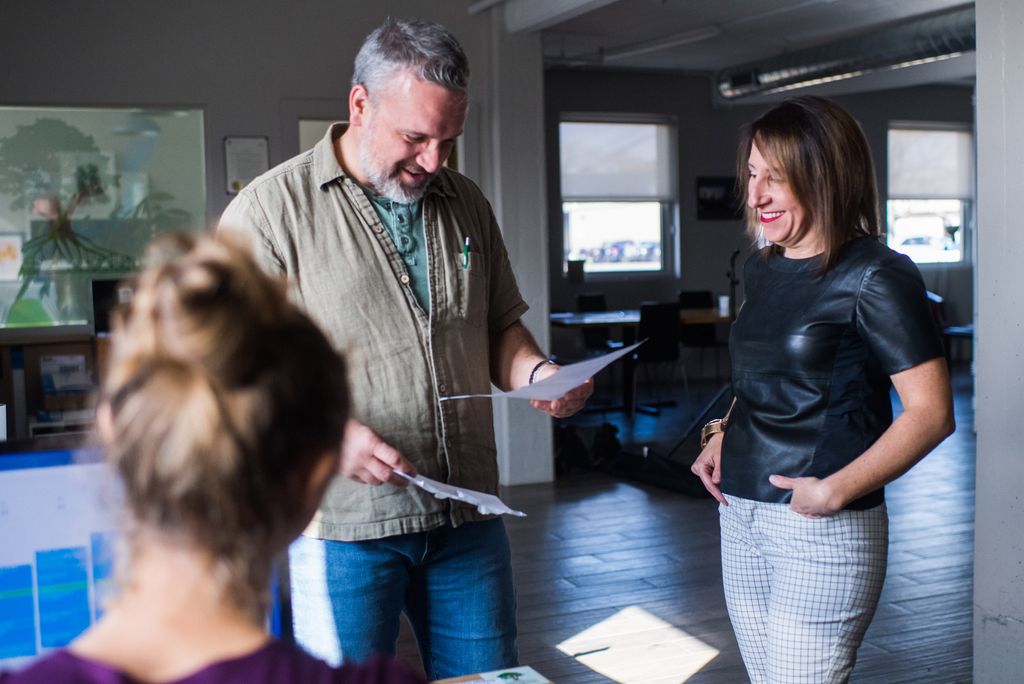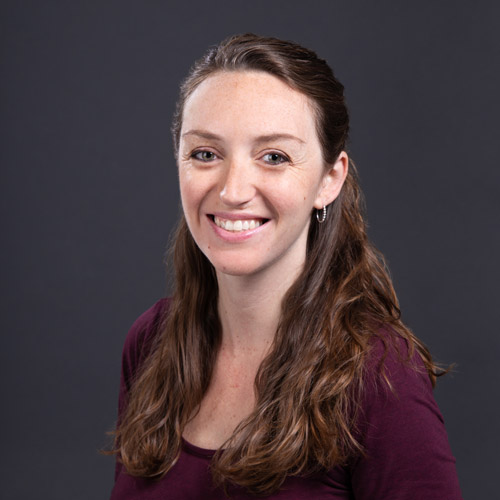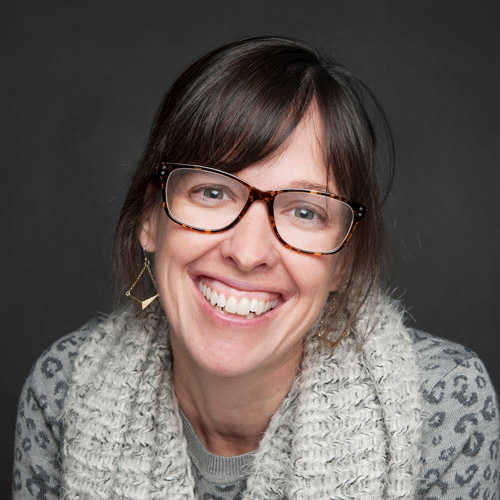Career Dedicated to Fighting for Environmental Justice in Chelsea

Roseann Bongiovanni
Nonprofit GreenRoots executive director
They are determined to use their experience, influence, and positions to help make their business, organization, and world more inclusive. They are breaking barriers—and then reaching back to help those behind them overcome the same hurdles. They are BU alumni, faculty, and staff—of every race, ethnicity, age, and gender—and they are “Opening Doors” for the next generation.
They are BU alumni, faculty, and staff—of every race, ethnicity, age, and gender—and they are “Opening Doors” for the next generation.
In a recent Boston Globe editorial, columnist Yvonne Abraham bemoaned the fact that the working-class city of Chelsea, Mass. (the state’s second most densely populated city, with just over 40,000 people), is likely to be home to a new Eversource electrical substation, despite protests from environmental groups and residents. “The proposed site is flood-prone now, and will be much more so in coming decades with sea levels rising,” Abraham notes. “They worry about the risk of fire or explosion, especially given the fact that the substation would be just 800 feet from a tank filled with millions of gallons of jet fuel, and on the edge of a neighborhood full of wooden-framed houses that would be very hard to evacuate if a disaster struck.”
Leading the charge against the substation is the Chelsea nonprofit GreenRoots, led by executive director Roseann Bongiovanni (CAS’99, SPH’01), whose family has lived in Chelsea for three generations. GreenRoots is a spinoff of a group that began 25 years ago with the goal of preserving Chelsea’s well-maintained open greenspace. Its mission quickly expanded to include fighting for environmental justice and public health, and today it leads quality-of-life campaigns and programming.
Research shows that children who have exposure to green space grow up physically and mentally healthier, says Bongiovanni, a former Chelsea city councilor.
Her accomplishments include raising $1.5 million for the design of Creekside Commons Park, formerly an abandoned parcel of land, and leading successful grassroots organizing campaigns to defeat the construction of a dirty diesel power plant in the city and to stop ethanol trains from traveling to a Chelsea Creek facility. She also managed two economic stimulus–funded projects exceeding $2 million, which significantly improved Chelsea’s air quality.
Bongiovanni’s advocacy work has earned her numerous honors, among them the Alternatives for Community and Environment Founders’ Award in 2001, the National Oceanic and Atmospheric Administration Environmental Hero Award in 2006, and the All-Chelsea Award “Adult Resident of the Year” in 2007.
A look at Chelsea’s history over the past few decades shows a city that has faced many problems and obstacles. At the request of Chelsea officials, in 1988 Boston University agreed to manage the failing schools for 10 years (renewed for another 10 years in 1998), an unprecedented move by a private university. Known officially as the Boston University/Chelsea Partnership, the management plan called for sweeping changes in curricula, teacher training, school policies, and facilities. Then in 1991, the Massachusetts legislature approved an emergency proposal by the governor to assume state control of the fiscally troubled city, the first time a Massachusetts community had been placed in receivership since the Depression.
Bostonia spoke with Bongiovanni about her career, her passion for her city, and how improving environmental conditions leads to a better quality of life for the city’s residents, nearly 20 percent of whom were living in poverty in 2017, the most recent year for which statistics are available.
Q&A
With Roseann Bongiovanni
Bostonia: You are a third-generation Chelsean. What made you decide to raise your own children there?
Bongiovanni: On my mom’s side, we’ve been here for three generations; my great-grandparents came from Italy and settled in Chelsea, and they were very involved civically and in the church. It feels like home. It’s a community that I know and love, and I’ve always felt really connected to it. When my husband and I got married, I said, “We are moving to Chelsea.” We have been in Chelsea since and now we are raising our kids here. I think Chelsea is an amazingly vibrant and persistent community that is dedicated and really resilient. It’s overcome so many challenges. It’s a really tight-knit, great community.
Can you talk about some of the changes you’ve seen over the last few years?
I think there is a whole lot more development now than when I was a kid. Growing up, there were so many more industrial uses throughout the city—junkyards, scrap yards. I also don’t remember Chelsea being so bad when I was a kid. I’ve read a number of books about how troubled the city was, with drugs and corruption. Some of the corruption was when I was in high school, but in terms of it being a downtrodden community, I don’t remember that. We always had a really positive neighborhood and a great sense of community. So I never felt the city was really negative. Now I think there is so much more positivity. Chelsea has been named an “All-America City” twice, we have a prestigious award from the Robert Wood Johnson Foundation, our city government is much more transparent and accountable to the residents. I would say the most remarkable change is that the community members are really involved in government and civic affairs, and they make sure that city officials are accountable to residents and taxpayers.
I think that’s because of the corrupt past, and when the city went into receivership. The city became very nervous that we could be annexed to Boston, lose a lot of political power, and would be just a neighborhood. So that galvanized folks more to become civically involved. From that point, folks became much involved in the community and now hold business and politicians much more accountable. I think that’s the most exciting change.
What was your experience like at BU?
It was really great. I was in a Catholic elementary school in Chelsea and then I was fortunate to receive a BU/Chelsea Partnership scholarship. I was in a tight community—I was an Italian major living in an Italian house. I got involved in a number of different activities on campus. It was very eye-opening. I was one of the top students in Chelsea, and when I got to BU that didn’t mean anything. It was a real challenge, a real struggle. I remember being angry that I wasn’t as prepared as I should have been, and I had to do a lot of work with professors and other mentors to get on track and to keep my grades up and keep my scholarship. I remember working really hard at BU.
I also remember it was a time when BU had taken over the Chelsea school system. There was always stuff in the Daily Free Press about Chelsea, and how our school system was in such disarray. I remember classmates and friends talking down about Chelsea, saying it was such a poor community. That really angered me. I remember standing up for Chelsea and being upset that BU had portrayed us in such a negative light.
How did you get involved in community organizing and environmental advocacy work?
After I graduated from CAS, I came back to Chelsea, but then started the master of public health program at the School of Public Health that September. I worked full time at Chelsea GreenSpace and Recreation and went to school full time. I wanted to continue the work that I had started with the community. I started as a community organizer when I was 18. I wanted to focus on community and public health, and I’ve continued to do that for the past 18 years.
When I started in 1995, the program was called the Chelsea GreenSpace and Recreation Committee. Then it continued as the Chelsea Collaborative, until we spun off three years ago into GreenRoots. We were doing environmental justice work under the umbrella of Chelsea Collaborative, and our members wanted to delve more deeply into environmental justice issues. We had made quite a significant impact, but folks felt we could have an even greater impact, so we spun off and opened our headquarters on the Chelsea Creek.
What does your job as executive director entail?
Depends on the day. Most days I’m doing a lot of program work, like working on revitalizing the Chelsea Creek, issues and policies preventing the displacement of our residents, making sure that businesses are being held accountable, working on public health issues, building a community garden, cleaning up a park. It sort of runs the gamut. But much of it also has to do with raising money and getting the word out there about how much work our organization is doing.

Why is environmental advocacy and the fight for equality and justice so important to you?
It’s my community. I grew up here, but as a kid didn’t necessarily realize that we were surrounded by water on three sides. Our community didn’t have access to the water because industries were dominating the waterfront. So you didn’t have places to run or bike or be close to the water. In our minds, that wasn’t by chance. It’s a case of environmental discrimination and racism, and so we are working to reverse all of those years of industrial blight. It’s really rooted in community. If it was just an environmental organization, I wouldn’t be all jazzed up about this work, but because it is rooted around community and justice and equality, that gives me a lot of passion. I’m very passionate about this issue because it’s just not fair—people shouldn’t have to live like this.
In what ways does improving environmental conditions in Chelsea lead to a better quality of life for residents?
Creating more open space and parks and trees, cleaning our air, making our environment healthier is giving folks a place to go out and exercise, a place to be outside. There are a lot of data that say that giving kids exposure to green space helps them to grow up healthier, with fewer mental health problems and other connections to violence. So I feel that it’s really important for kids to be able to see the blue space, like access to the waterfront, and green space, parks, and open space.
What can people do in their own workplaces to make them more inclusive, diverse, and welcoming?
I think folks need to think more about the communities they are living in, and think about if their staff represents the communities they work and organize in. Of our staff, 90 percent are from Chelsea and East Boston, the two communities that we are organizing in, and 100 percent are fluent in Spanish and English. So I think folks need to think about diversity and engaging people in places like Chelsea who are really smart and have a whole lot of life experiences that can bring value to their organization and workplace and are amazingly strong people.
What specific changes have you made in your workplace to make it more inclusive?
All of our community meetings are run bilingually, in English and Spanish. When we hire, we have a preference for folks who live in the community, and folks need to be fluent or at least proficient in both languages to come on board. Pretty much all of our internal materials, like the employee handbook, are in English and Spanish. Staff meetings are bilingual, so it’s inclusive and folks feel like they can speak the language of their heart.
We use preferred pronouns when we write about folks and introduce ourselves at different events and activities.
Have you encountered any kind of resistance or pushback, and if so, how did you handle it?
Not at our office. We are pretty progressive, everyone is pretty cool. There are definitely folks in the community who are not used to the translation in meetings. So it’s challenging for them. We had a candidate’s forum for the folks running for city council in Chelsea last week, and the whole thing was run bilingually. There were announcements made saying if you aren’t bilingual, put a headset on, because you won’t understand. It was amazing to see folks, who we know are not fully bilingual, or even proficient, just refusing to put on a headset. Our whole staff went through a language justice training, so that we could understand what it’s like to interpret—what do you hear, what do you not hear. It’s important to make sure everyone is on the same playing field when it comes to language. We’ve also had a gender equity training so we could talk about all of the different ways we are making sure we are being cognizant of what folks want to be called.
Do you know BU alumni, faculty, and staff who are opening doors or breaking barriers themselves? Email Cindy Buccini at cbuccini@bu.edu and recommend them for our series “Opening Doors.”
This Series
Also in
Opening Doors
-
March 28, 2024
Opening Doors: Rhonda Harrison (ENG’98,’04, GRS’04)
-
December 1, 2023
Opening Doors: Alejandro Garcia-Amaya (CGS’05, Questrom’07)
-
October 23, 2023
Opening Doors: Fundación ConEducación



Comments & Discussion
Boston University moderates comments to facilitate an informed, substantive, civil conversation. Abusive, profane, self-promotional, misleading, incoherent or off-topic comments will be rejected. Moderators are staffed during regular business hours (EST) and can only accept comments written in English. Statistics or facts must include a citation or a link to the citation.